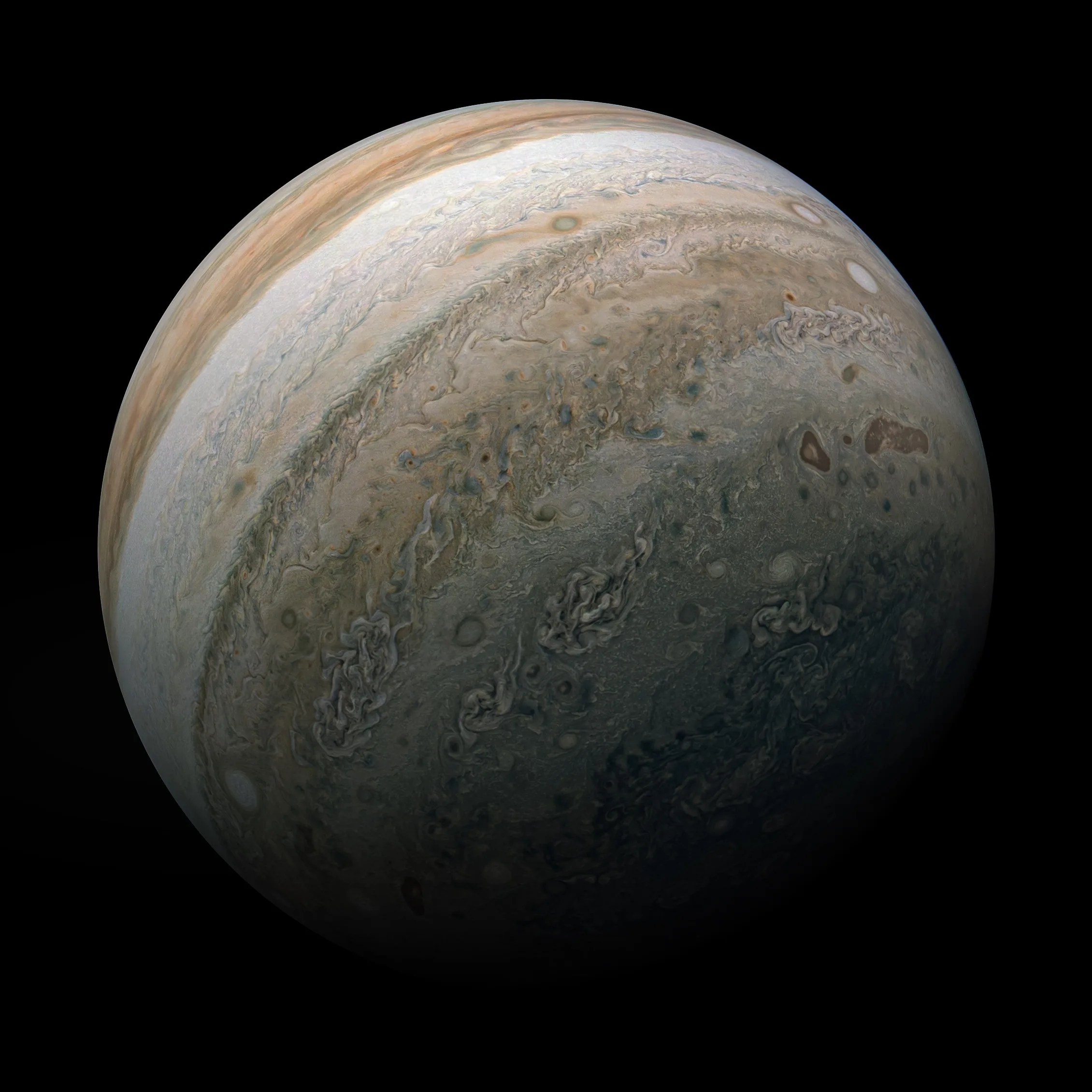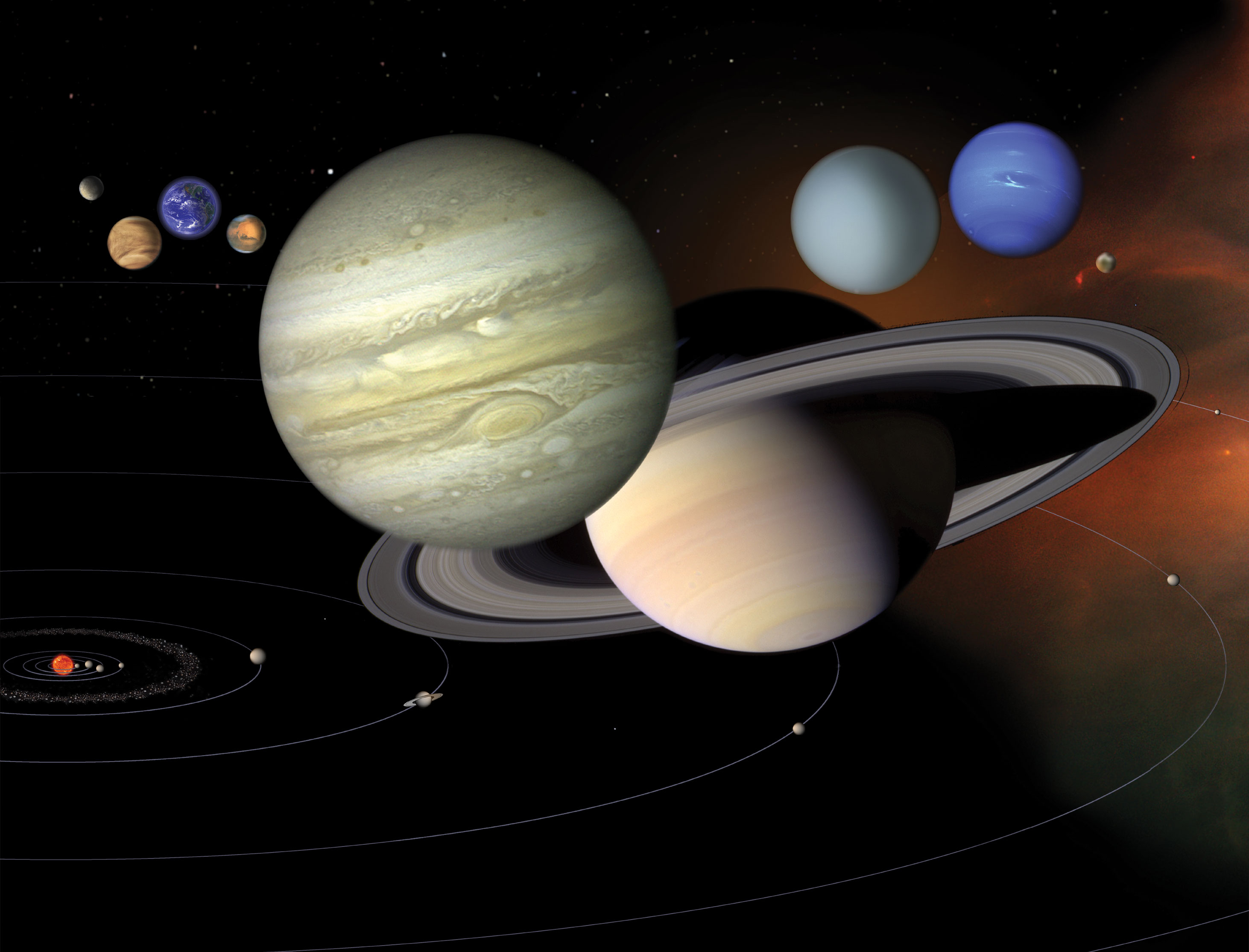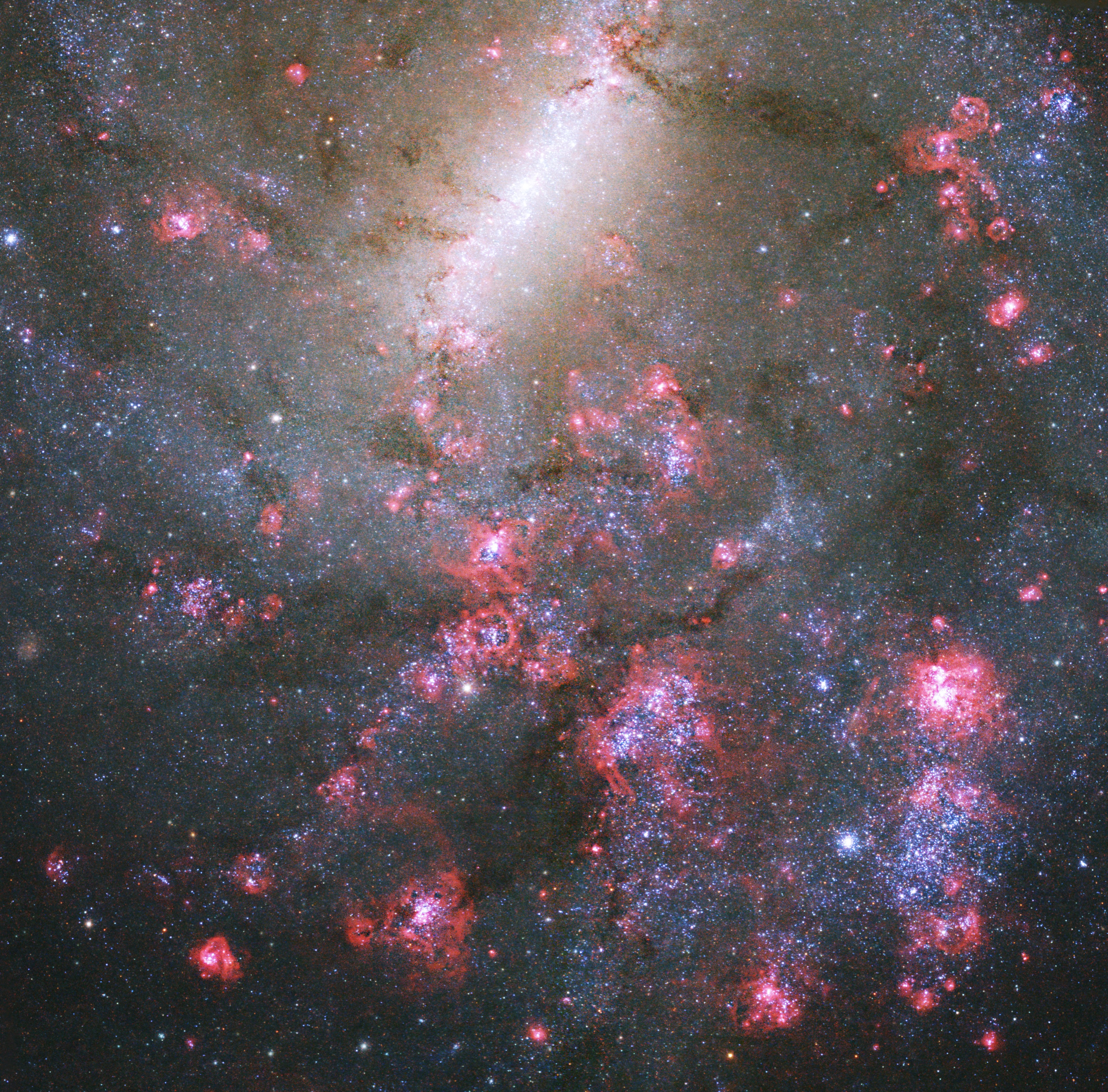Narrow jet stream near equator has winds traveling 320 miles per hour
NASA’s James Webb Space Telescope has discovered a new, never-before-seen feature in Jupiter’s atmosphere. The high-speed jet stream, which spans more than 3,000 miles (4,800 kilometers) wide, sits over Jupiter’s equator above the main cloud decks. The discovery of this jet is giving insights into how the layers of Jupiter’s famously turbulent atmosphere interact with each other, and how Webb is uniquely capable of tracking those features.
Image: Webb's View of Jupiter
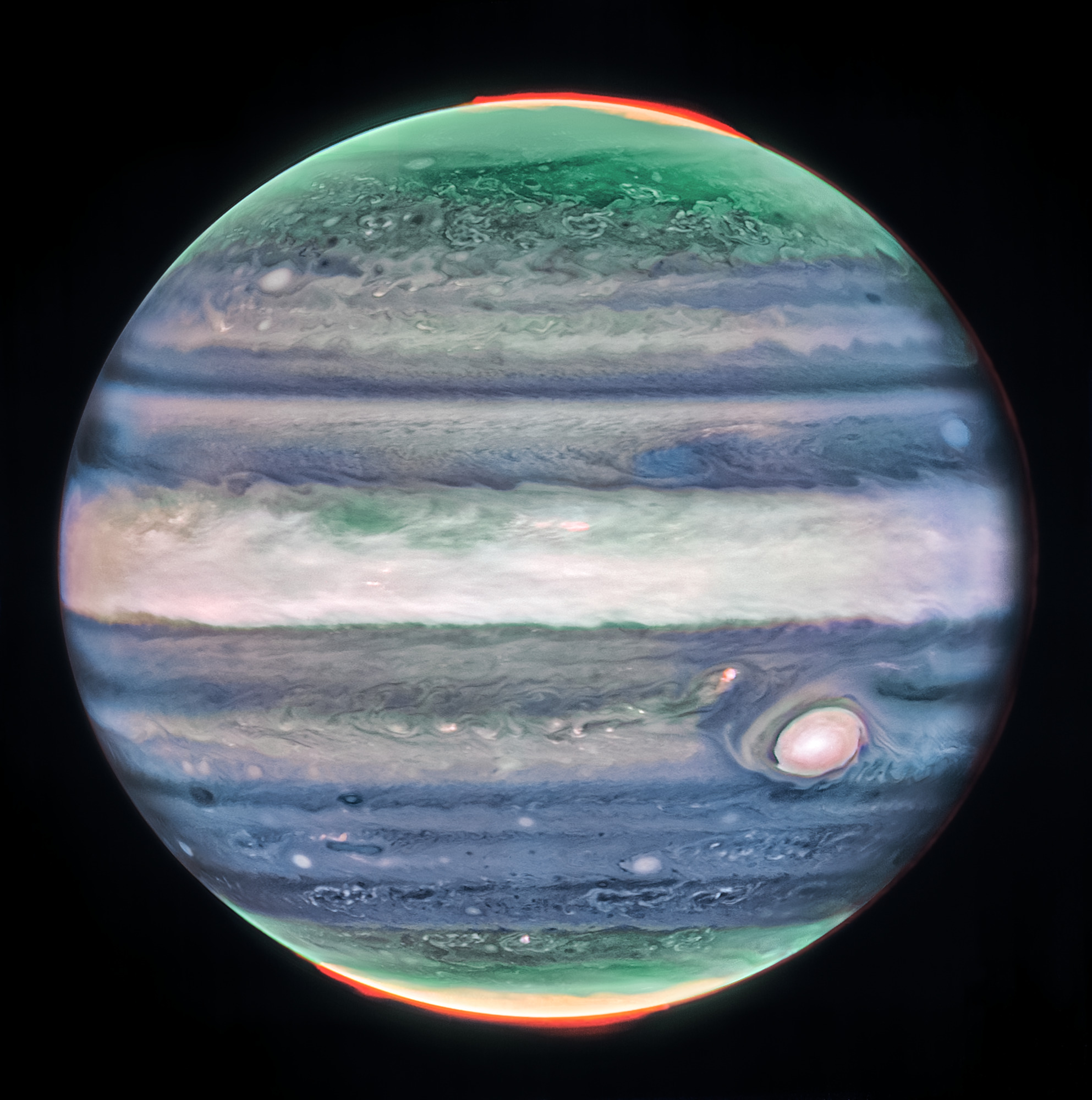
“This is something that totally surprised us,” said Ricardo Hueso of the University of the Basque Country in Bilbao, Spain, lead author on the paper describing the findings. “What we have always seen as blurred hazes in Jupiter’s atmosphere now appear as crisp features that we can track along with the planet’s fast rotation.”
The research team analyzed data from Webb’s NIRCam (Near-Infrared Camera) captured in July 2022. The Early Release Science program – jointly led by Imke de Pater from the University of California, Berkeley and Thierry Fouchet from the Observatory of Paris – was designed to take images of Jupiter 10 hours apart, or one Jupiter day, in four different filters, each uniquely able to detect changes in small features at different altitudes of Jupiter’s atmosphere.
“Even though various ground-based telescopes, spacecraft like NASA’s Juno and Cassini, and NASA’s Hubble Space Telescope have observed the Jovian system’s changing weather patterns, Webb has already provided new findings on Jupiter’s rings, satellites, and its atmosphere,” de Pater noted.
While Jupiter is different from Earth in many ways – Jupiter is a gas giant, Earth is a rocky, temperate world – both planets have layered atmospheres. Infrared, visible, radio, and ultraviolet light wavelengths observed by these other missions detect the lower, deeper layers of the planet’s atmosphere – where gigantic storms and ammonia ice clouds reside.
Image: Jupiter's Equatorial Jet Stream
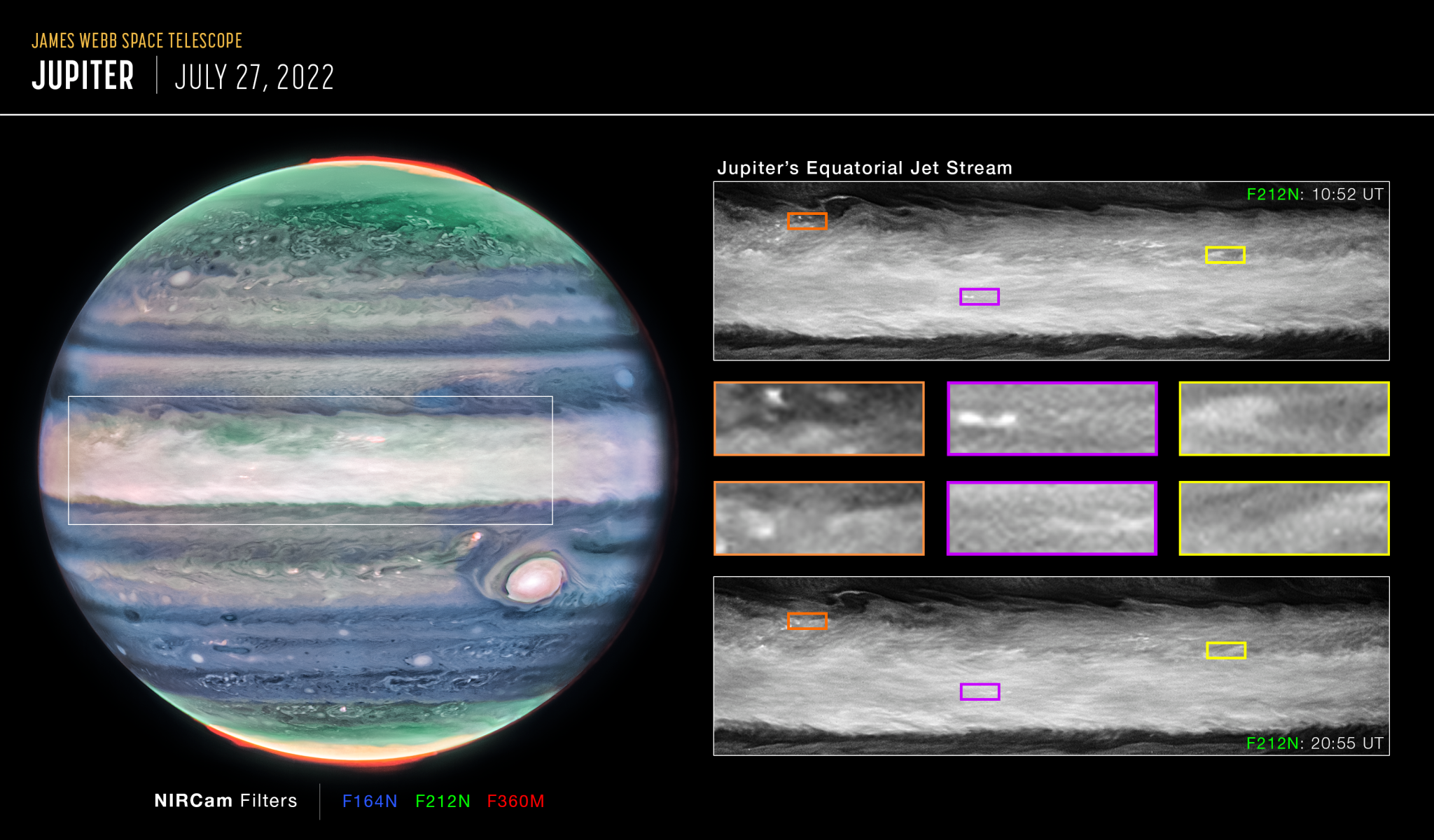
On the other hand, Webb’s look farther into the near-infrared than before is sensitive to the higher-altitude layers of the atmosphere, around 15-30 miles (25-50 kilometers) above Jupiter’s cloud tops. In near-infrared imaging, high-altitude hazes typically appear blurry, with enhanced brightness over the equatorial region. With Webb, finer details are resolved within the bright hazy band.
The newly discovered jet stream travels at about 320 miles per hour (515 kilometers per hour), twice the sustained winds of a Category 5 hurricane here on Earth. It is located around 25 miles (40 kilometers) above the clouds, in Jupiter’s lower stratosphere.
By comparing the winds observed by Webb at high altitudes, to the winds observed at deeper layers from Hubble, the team could measure how fast the winds change with altitude and generate wind shears.
Image: Jupiter's Winds
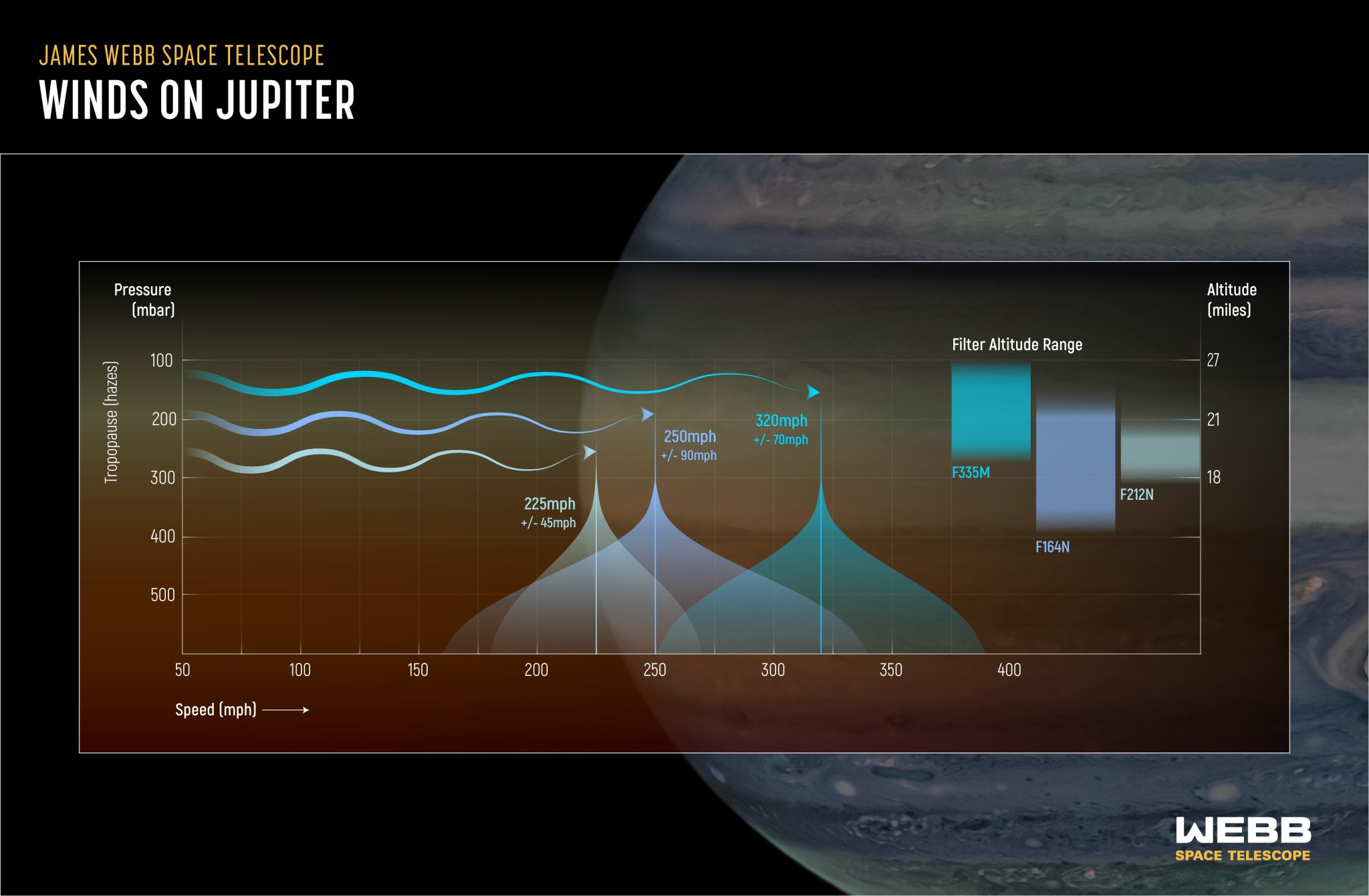
While Webb’s exquisite resolution and wavelength coverage allowed for the detection of small cloud features used to track the jet, the complementary observations from Hubble taken one day after the Webb observations were also crucial to determine the base state of Jupiter’s equatorial atmosphere and observe the development of convective storms in Jupiter’s equator not connected to the jet.
“We knew the different wavelengths of Webb and Hubble would reveal the three-dimensional structure of storm clouds, but we were also able to use the timing of the data to see how rapidly storms develop,” added team member Michael Wong of the University of California, Berkeley, who led the associated Hubble observations.
The researchers are looking forward to additional observations of Jupiter with Webb to determine if the jet’s speed and altitude change over time.
Image: Zoom in on Webb's View of Jupiter

“Jupiter has a complicated but repeatable pattern of winds and temperatures in its equatorial stratosphere, high above the winds in the clouds and hazes measured at these wavelengths,” explained team member Leigh Fletcher of the University of Leicester in the United Kingdom. “If the strength of this new jet is connected to this oscillating stratospheric pattern, we might expect the jet to vary considerably over the next 2 to 4 years – it’ll be really exciting to test this theory in the years to come.”
“It’s amazing to me that, after years of tracking Jupiter’s clouds and winds from numerous observatories, we still have more to learn about Jupiter, and features like this jet can remain hidden from view until these new NIRCam images were taken in 2022,” continued Fletcher.
The researchers’ results were recently published in Nature Astronomy.
The James Webb Space Telescope is the world’s premier space science observatory. Webb is solving mysteries in our solar system, looking beyond to distant worlds around other stars, and probing the mysterious structures and origins of our universe and our place in it. Webb is an international program led by NASA with its partners, ESA (European Space Agency) and the Canadian Space Agency.
Media Contacts
Laura Betz – laura.e.betz@nasa.gov
NASA’s Goddard Space Flight Center, Greenbelt, Md.
Hannah Braun – hbraun@stsci.edu , Christine Pulliam – cpulliam@stsci.edi
Space Telescope Science Institute, Baltimore, Md.
Downloads
Download full resolution images for this article from the Space Telescope Science Institute.
Research results published in Nature Astronomy.
Related Information
NASA’s Jupiter Website – https://science.nasa.gov/jupiter/
NASA’s Solar System Website – https://science.nasa.gov/solar-system/
More Webb News – https://science.nasa.gov/mission/webb/latestnews/
More Webb Images – https://science.nasa.gov/mission/webb/multimedia/images/
Webb Mission Page – https://science.nasa.gov/mission/webb/
En Español
Esta Artículo en español


























